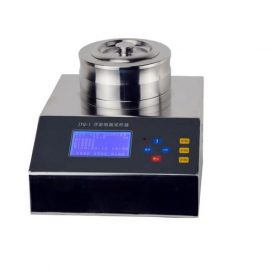Palmitoylethanolamide: A Natural Compound with Potential Therapeutic Benefits

# Palmitoylethanolamide: A Natural Compound with Potential Therapeutic Benefits
## Introduction to Palmitoylethanolamide
Palmitoylethanolamide (PEA) is a naturally occurring fatty acid amide that has gained increasing attention in the scientific community for its potential therapeutic properties. This endogenous compound, first identified in the 1950s, is produced by our bodies as part of the endocannabinoid system and plays a crucial role in maintaining cellular homeostasis.
## The Science Behind PEA
PEA belongs to a class of compounds called N-acylethanolamines (NAEs). It is synthesized on demand in response to cellular stress and inflammation, primarily acting through the peroxisome proliferator-activated receptor alpha (PPAR-α). Unlike some other endocannabinoids, PEA does not directly bind to cannabinoid receptors but exerts its effects through alternative pathways.
Research suggests that PEA works through multiple mechanisms, including:
- Modulation of mast cell activation
- Reduction of neuroinflammation
- Activation of PPAR-α receptors
- Interaction with the endocannabinoid system
## Potential Therapeutic Applications
### Pain Management
One of the most well-researched applications of PEA is in pain management. Numerous studies have shown its effectiveness in reducing chronic pain, particularly neuropathic pain. PEA’s ability to modulate inflammation and stabilize mast cells makes it particularly promising for conditions like:
- Sciatica
- Diabetic neuropathy
- Fibromyalgia
- Carpal tunnel syndrome
### Neuroprotective Effects
Emerging research indicates that PEA may have significant neuroprotective properties. Its anti-inflammatory effects in the central nervous system suggest potential benefits for neurodegenerative conditions such as Alzheimer’s disease, Parkinson’s disease, and multiple sclerosis.
### Immune System Modulation
PEA has shown promise in regulating immune responses, particularly in autoimmune conditions. Its ability to reduce excessive inflammation without suppressing the entire immune system makes it an attractive candidate for conditions like:
- Rheumatoid arthritis
- Inflammatory bowel disease
- Psoriasis
## Safety and Dosage Considerations
One of the most appealing aspects of PEA is its excellent safety profile. As an endogenous compound, it is generally well-tolerated with minimal side effects reported in clinical studies. Typical dosages range from 300mg to 1200mg per day, often divided into two or three doses.
Keyword: Palmitoylethanolamide
Unlike many pharmaceutical options for pain and inflammation, PEA does not appear to cause gastrointestinal irritation or other common side effects associated with NSAIDs. However, as with any supplement, it’s recommended to consult with a healthcare professional before starting PEA supplementation.
## Future Research Directions
While the existing research on PEA is promising, scientists continue to explore its full potential. Current areas of investigation include:
- PEA’s role in mood disorders and depression
- Potential applications in metabolic syndrome
- Effects on skin health and wound healing
- Possible benefits for respiratory conditions
## Conclusion
Palmitoylethanolamide represents an exciting area of natural medicine research. Its multifaceted mechanisms of action, excellent safety profile, and potential applications across various health conditions make it a compound worth watching. As research continues to uncover more about PEA’s therapeutic potential, it may become an increasingly important tool in integrative medicine approaches to pain management, neuroprotection, and immune regulation.


